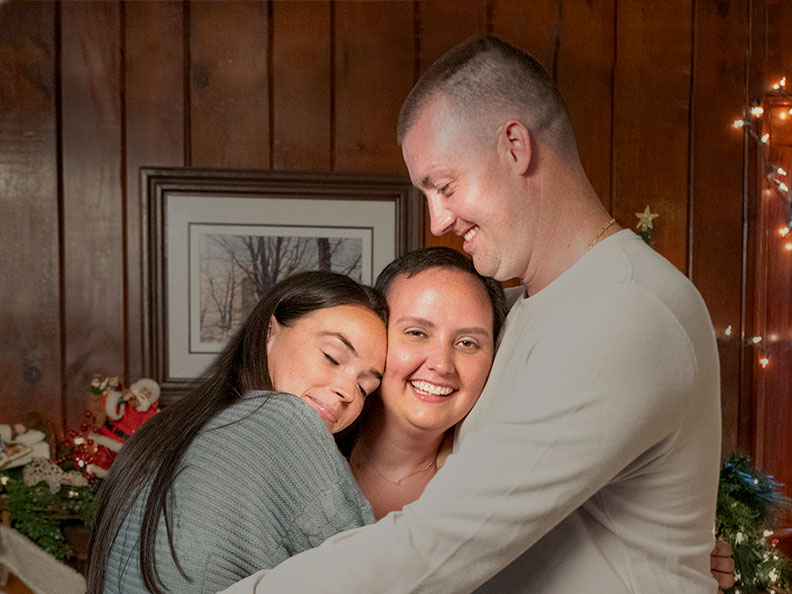Your gift is 100% tax deductible
Drugs Other Than Chemo for Non-Hodgkin Lymphoma in Children
In recent years, drugs have been developed that target specific parts of cancer cells. These drugs work differently from standard chemotherapy (chemo) drugs, and they often have different side effects. Some of these drugs might be useful in certain cases of childhood non-Hodgkin lymphoma (NHL), either by themselves or with chemo.
Monoclonal antibodies
Antibodies are proteins normally made by the body’s immune system to help fight infections. Lab-made versions, called monoclonal antibodies, can be designed to attack a specific target, such as a protein on the surface of lymphoma cells.
Several monoclonal antibodies are now used to treat lymphoma in adults. Some of these are now being studied or used in children as well.
Rituximab
This antibody attaches to the CD20 protein on the surface of some types of lymphoma cells, which causes the cells to die. Rituximab is often used with chemotherapy as part of the treatment for Burkitt lymphoma, Burkitt-like lymphoma, and diffuse large B-cell lymphoma.
Treatment is typically given as an intravenous (IV) infusion in the doctor’s office, clinic, or hospital.
Rituxan was the original brand name for rituximab, but several versions like it (called biosimilars) are now available as well, including Ruxience, Truxima, and Riabni.
Common side effects of rituximab are usually mild but can include chills, fever, nausea, rashes, fatigue, and headaches during or after the infusion. Side effects are less likely with later doses. Rituximab can also increase a person’s risk of some types of infections.
Brentuximab vedotin (Adcetris)
This is an antibody-drug conjugate (ADC), meaning it is an antibody (in this case, an anti-CD30 antibody) attached to a chemotherapy drug. Some lymphoma cells have the CD30 protein on their surface. The antibody acts like a homing signal, bringing the chemo drug to the lymphoma cells, where it enters the cells and kills them when they try to divide into new cells.
Brentuximab vedotin can be used to treat anaplastic large cell lymphoma (ALCL), either along with chemo as part of the first treatment, or by itself for ALCL that has come back after other treatments. So far it has been used mainly in adults, but it's now being studied for use in children as well.
This drug is given as an infusion into a vein (IV), typically every 2 or 3 weeks.
Common side effects include nerve damage (neuropathy), low blood counts, fatigue, fever, nausea and vomiting, infections, diarrhea, and cough.
ALK inhibitors
In most children with ALCL, the ALK gene inside the ALCL cells is abnormal. ALK inhibitor drugs target cells with an abnormal ALK gene. These drugs have shown promising results in children with ALCL, usually after other treatments have been tried.
For example, crizotinib (Xalkori) can be used in children at least one year old who have ALCL that is no longer responding to other treatments. It is also being studied to be used with chemo as part of the first treatment for ALCL. This drug is a pill, typically taken twice a day.
Other ALK inhibitors, such as brigatinib (Alunbrig), are now being studied as well.
Common side effects of crizotinib (and other ALK inhibitors) can include nausea and vomiting, diarrhea or constipation, mouth sores, headaches, feeling tired, loss of appetite, changes in vision, and muscle and joint pain.
Less common but more serious side effects can include inflammation (swelling) in the lungs or other parts of the body, liver damage, serious vision problems, and heart rhythm problems.
Other drugs that target parts of lymphoma cells are now being studied for use in children as well.
- Written by
- References

The American Cancer Society medical and editorial content team
Our team is made up of doctors and oncology certified nurses with deep knowledge of cancer care as well as editors and translators with extensive experience in medical writing.
Bollard CM, Lim MS, Gross TG; COG Non-Hodgkin Lymphoma Committee. Children’s Oncology Group’s 2013 blueprint for research: Non-Hodgkin lymphoma. Pediatr Blood Cancer. 2013;60:979–984.
Gross TG, Kamdar KY, Bollard CM. Chapter 19: Malignant Non-Hodgkin Lymphomas in Children. In: Blaney SM, Adamson PC, Helman LJ, eds. Pizzo and Poplack’s Principles and Practice of Pediatric Oncology. 8th ed. Philadelphia Pa: Lippincott Williams & Wilkins; 2021.
Minard-Colin V, Aupérin A, Pillon M, et al. Rituximab for high-risk, mature B-cell Non-Hodgkin's lymphoma in children. N Engl J Med. 2020;382(23):2207-2219.
Mosse YP, Lim MS, Voss SD, et al. Safety and activity of crizotinib for paediatric patients with refractory solid tumours or anaplastic large-cell lymphoma: A Children’s Oncology Group phase 1 consortium study. Lancet Oncol. 2013;14:472−480.
National Cancer Institute Physician Data Query (PDQ). Childhood Non-Hodgkin Lymphoma Treatment. 2021. Accessed at https://www.cancer.gov/types/lymphoma/hp/child-nhl-treatment-pdq on June 14, 2021.
National Comprehensive Cancer Network (NCCN). Practice Guidelines in Oncology: Pediatric Aggressive Mature B-Cell Lymphomas. Version 2.2021. Accessed at https://www.nccn.org/professionals/physician_gls/pdf/ped_b-cell.pdf on July 1, 2021.
Sandlund JT, Onciu M. Chapter 94: Childhood Lymphoma. In: Niederhuber JE, Armitage JO, Doroshow JH, Kastan MB, Tepper JE, eds. Abeloff’s Clinical Oncology. 6th ed. Philadelphia, Pa: Elsevier; 2020.
Termuhlen AM, Gross TG. Overview of non-Hodgkin lymphoma in children and adolescents. UpToDate. 2021. Accessed at https://www.uptodate.com/contents/overview-of-non-hodgkin-lymphoma-in-children-and-adolescents on June 14, 2021.
Last Revised: December 6, 2021
American Cancer Society medical information is copyrighted material. For reprint requests, please see our Content Usage Policy.
American Cancer Society Emails
Sign up to stay up-to-date with news, valuable information, and ways to get involved with the American Cancer Society.



